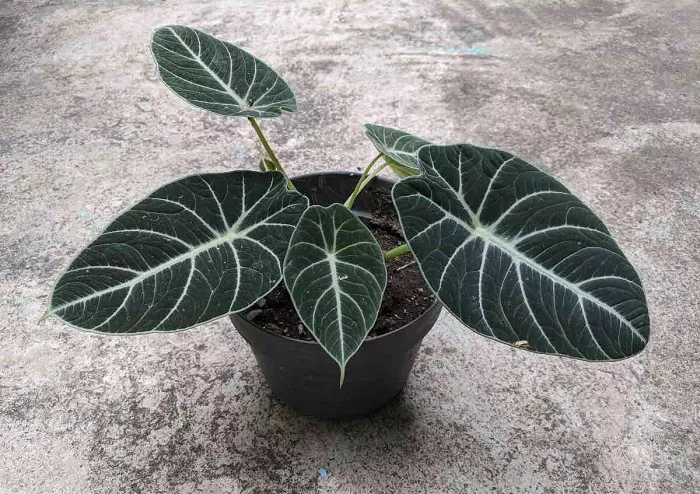Pollination is a vital process in the life cycle of plants, and alocasia flowers are no exception. These exotic and stunning plants can add a touch of tropical elegance to any garden or indoor space. However, their unique flowers often require a bit of assistance to ensure successful pollination. Whether you are a seasoned gardener or a novice with a green thumb, understanding the intricacies of alocasia flower pollination can lead to healthier plants and more vibrant blooms. In this article, we will explore the steps and techniques to effectively pollinate alocasia flowers, ensuring your plants thrive and produce the next generation of these beautiful specimens.
Understanding Alocasia Flowers
The Anatomy of Alocasia Flowers
Alocasia flowers are complex and fascinating structures. Unlike many common flowers, alocasia blooms are composed of a spadix, which is a central spike covered in tiny flowers, and a spathe, a large, modified leaf that surrounds and protects the spadix. The spathe can be quite striking, often with vibrant colors and intricate patterns. The flowers themselves are small and inconspicuous, but they play a crucial role in the plant’s reproduction.
Natural Pollinators of Alocasia
In their natural habitat, alocasia flowers are typically pollinated by insects such as beetles and flies. These insects are attracted to the spathe’s color and the scent emitted by the flowers. However, in a controlled environment like a garden or a greenhouse, these natural pollinators may not be present in sufficient numbers. This is where manual pollination comes into play.
Preparing for Pollination
Choosing the Right Time
Timing is crucial when it comes to pollinating alocasia flowers. The flowers are only receptive to pollination for a short period, usually a few days. It is essential to observe your alocasia plants closely to identify when the flowers are ready. Look for signs such as the spathe opening fully and the spadix becoming more prominent. This is the optimal time to begin the pollination process.
Gathering Tools and Materials
Before you start, gather the necessary tools and materials. You will need a small, soft brush or a cotton swab, a magnifying glass to get a closer look at the tiny flowers, and a small container to collect pollen. Ensure that all your tools are clean to avoid introducing any contaminants to the flowers.
The Pollination Process
Collecting Pollen
The first step in manual pollination is to collect pollen from the male flowers. Male flowers are usually located at the upper part of the spadix. Using your brush or cotton swab, gently tap the male flowers to release the pollen. Be careful not to damage the flowers in the process. Collect the pollen in your small container for later use.
Applying Pollen to Female Flowers
Female flowers are typically found at the base of the spadix. Using the same brush or a fresh cotton swab, gently transfer the collected pollen to the female flowers. Ensure that you cover all the female flowers evenly with pollen. This step requires patience and precision, as the flowers are quite small and delicate.
Monitoring and Care
After pollination, it is essential to monitor the flowers closely. Keep the plant in a stable environment with consistent temperature and humidity. Avoid disturbing the flowers unnecessarily, as this can affect the pollination process. Within a few weeks, you should see signs of successful pollination, such as the development of seed pods.
Tips for Successful Pollination
Ensuring Proper Plant Health
Healthy plants are more likely to produce viable flowers and successful pollination. Ensure that your alocasia plants are well-nourished, with regular watering and appropriate fertilization. Healthy plants will have stronger flowers and a higher chance of successful pollination.
Creating a Pollinator-Friendly Environment
If you prefer to rely on natural pollinators, create a pollinator-friendly environment around your alocasia plants. Planting other flowers that attract beetles and flies can help draw these insects to your garden. Providing a source of water and shelter can also encourage pollinators to visit your plants.
Patience and Persistence
Pollinating alocasia flowers can be a delicate and time-consuming process. It requires patience and persistence to observe the flowers closely, collect pollen carefully, and apply it accurately. Do not be discouraged if your first attempts are not successful. With practice and experience, you will become more proficient in this essential gardening skill.
Conclusion
Pollinating alocasia flowers can be a rewarding experience for any gardener. By understanding the anatomy of the flowers, choosing the right time, and following the proper techniques, you can ensure successful pollination and the growth of new alocasia plants. Whether you rely on natural pollinators or take matters into your own hands with manual pollination, the key is to provide the best possible conditions for your plants. With care and attention, your alocasia flowers will thrive, adding beauty and life to your garden.


